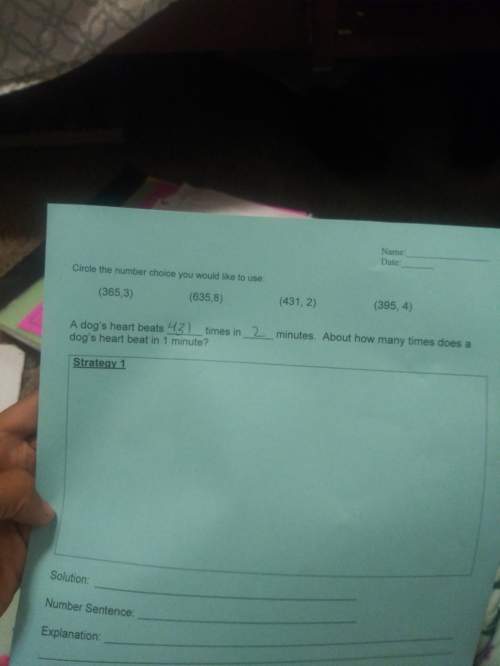
Physics, 11.02.2020 19:34 choiboiqg2187
The following are the Earth–Sun distance at the equinoxes and solstices: March equinox 149.0 million km June solstice 152.0 million km September equinox 150.2 million km December solstice 147.2 million km During the Earth is closest to the Sun and during the Earth is farthest from the Sun.

Answers: 3


Other questions on the subject: Physics

Physics, 21.06.2019 23:30, reyamukhtar
What are chlorofluorocarbons and what impact do they have on the atmosphere?
Answers: 1

Physics, 22.06.2019 01:00, KenzieD7876
Need asap ! what is the relationship between atmospheric pressure and the density of gas particles in an area of increasing pressure? (2 points) as air pressure in an area increases, the density of the gas particles in that area decreases. as air pressure in an area increases, the density of the gas particles in that area increases. as air pressure in an area increases, the density of the gas particles in that area remains constant. as air pressure in an area increases, the density of the gas particles in that area increases and decreases in an alternating pattern. 3. which of the following correctly describes a way in which earth's atmosphere interacts with the geosphere? (2 points) it contains gases that living organisms breathe. it contains gases that trap incoming solar radiation. it provides a medium for cycles that provide nutrients to living organisms. it provides a medium for water to move between earth's surface and the air. 4. which of the following is considered a drawback to using wind energy as a source of power? (2 points) wind energy is nonrenewable. wind energy produces large amounts of air pollution. 5. a meteorologist predicts that the weather in a region will soon change from clear skies to probable thunderstorms. prior to making this prediction, what did the meteorologist most likely observe on a barometer? (2 points) the barometer fell slightly. the barometer fell substantially. the barometer rose slightly. the barometer rose substantially. 6. which of the following do meteorologists not typically use weather balloons to record? (2 points) atmospheric pressure cloud types humidity temperature 7. during which step in the can crush lab did water vapor force air from the can? (2 points) the can was filled nearly to the top with water. the can was placed on the hot stove top burner for several minutes. the can was removed from the hot stove top burner. the can was placed upside-down in the water-filled pan.
Answers: 2

Physics, 22.06.2019 12:10, aedelfrance9250
Aspring has a natural length of 8 m. if a 12-n force is required to keep it stretched to a length of 10 m, how much work w is required to stretch it from 8 m to 16 m? (round your answer to two decimal places.)
Answers: 1

Physics, 22.06.2019 13:20, monkeygaming274
Ahanging spring stretches by 35.0 cm when an object of mass 450 g is hung on it at rest. in this situation, we define its position as x = 0. the object is pulled down an additional 18.0 cm and released from rest to oscillate without friction. what is its position x at a moment 84.4 s later? express your answer in cm.
Answers: 1
You know the right answer?
The following are the Earth–Sun distance at the equinoxes and solstices: March equinox 149.0 million...
Questions in other subjects:


Mathematics, 19.11.2020 22:40



Mathematics, 19.11.2020 22:40

Biology, 19.11.2020 22:40


Chemistry, 19.11.2020 22:40

Mathematics, 19.11.2020 22:40

Mathematics, 19.11.2020 22:40




